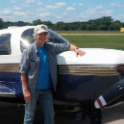-
Posts
4,146 -
Joined
-
Last visited
-
Days Won
14
midlifeflyer last won the day on July 27
midlifeflyer had the most liked content!

midlifeflyer replied to mooniac58's topic in General Mooney Talk

midlifeflyer replied to mooniac58's topic in General Mooney Talk

midlifeflyer replied to mooniac58's topic in General Mooney Talk

midlifeflyer replied to mooniac58's topic in General Mooney Talk

midlifeflyer replied to mooniac58's topic in General Mooney Talk

midlifeflyer replied to AndreiC's topic in General Mooney Talk
We have placed cookies on your device to help make this website better. You can adjust your cookie settings, otherwise we'll assume you're okay to continue.